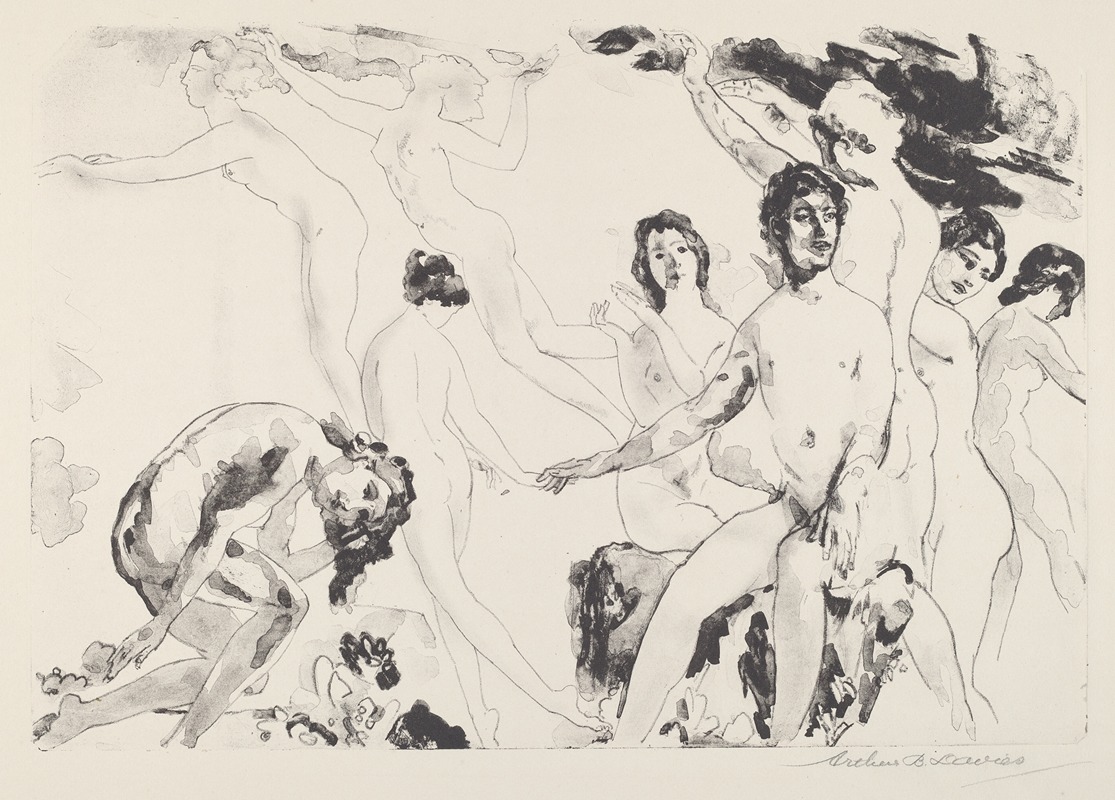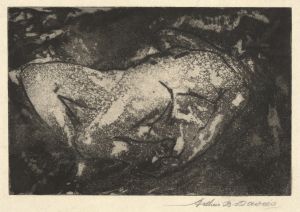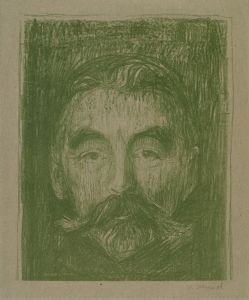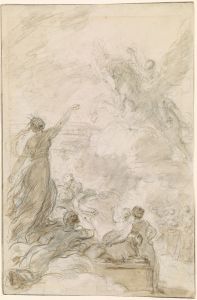
Release at the Gates
A hand-painted replica of Arthur Bowen Davies’s masterpiece Release at the Gates, meticulously crafted by professional artists to capture the true essence of the original. Each piece is created with museum-quality canvas and rare mineral pigments, carefully painted by experienced artists with delicate brushstrokes and rich, layered colors to perfectly recreate the texture of the original artwork. Unlike machine-printed reproductions, this hand-painted version brings the painting to life, infused with the artist’s emotions and skill in every stroke. Whether for personal collection or home decoration, it instantly elevates the artistic atmosphere of any space.
Arthur Bowen Davies (1862–1928) was an American artist known for his contributions to the Symbolist and Tonalist movements. He played a significant role in the early 20th-century American art scene, particularly as a member of "The Eight," a group of artists who challenged the conservative art establishment of their time. One of his notable works is "Release at the Gates."
"Release at the Gates" is a painting by Arthur Bowen Davies that exemplifies his unique style, which often combined elements of mysticism and dreamlike imagery. Davies' work is characterized by its ethereal quality, with figures often appearing to float or move gracefully through ambiguous, often pastoral landscapes. This painting is no exception, showcasing his ability to blend the real with the fantastical.
The painting depicts a serene and somewhat enigmatic scene. In "Release at the Gates," Davies employs a soft, muted color palette that enhances the dreamlike atmosphere of the work. The figures in the painting are rendered with a delicate touch, their forms almost blending into the background. This technique creates a sense of harmony and tranquility, inviting viewers to lose themselves in the contemplative mood of the piece.
Davies was heavily influenced by the Symbolist movement, which sought to express the emotional and spiritual through symbolic imagery. This influence is evident in "Release at the Gates," where the gates themselves can be interpreted as a metaphor for transition or passage, possibly alluding to themes of liberation or enlightenment. The exact meaning of the painting, however, is left open to interpretation, a common trait in Davies' work that allows viewers to bring their own experiences and emotions to their understanding of the piece.
Throughout his career, Arthur Bowen Davies was known for his ability to merge different artistic styles and influences. He was not only a painter but also a supporter of modern art in America. His involvement in organizing the 1913 Armory Show, which introduced European avant-garde art to the American public, was a testament to his forward-thinking vision. This exhibition was pivotal in shaping the course of American modernism, and Davies' own work, including "Release at the Gates," reflects his commitment to exploring new artistic frontiers.
"Release at the Gates" is a testament to Davies' skill in creating evocative, atmospheric works that transcend simple representation. His paintings often evoke a sense of mystery and introspection, encouraging viewers to ponder the deeper meanings behind the imagery. This particular work, with its serene yet enigmatic quality, is a prime example of his ability to capture the intangible and the poetic in visual form.
In summary, "Release at the Gates" by Arthur Bowen Davies is a significant work that showcases the artist's unique blend of Symbolism and Tonalism. Through its delicate rendering and evocative imagery, the painting invites viewers to explore themes of transition and liberation, all while maintaining an air of mystery that is characteristic of Davies' oeuvre.


















